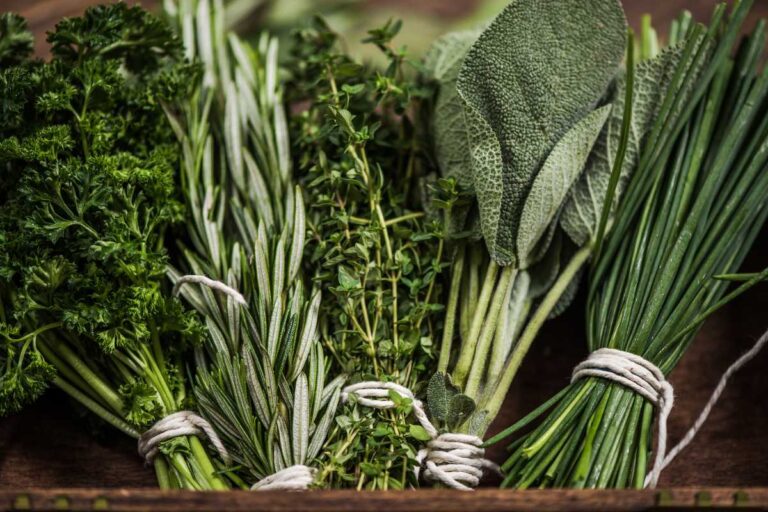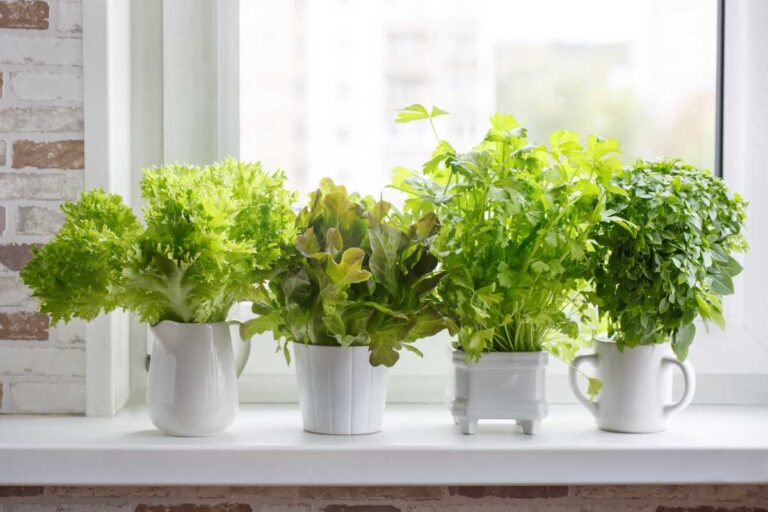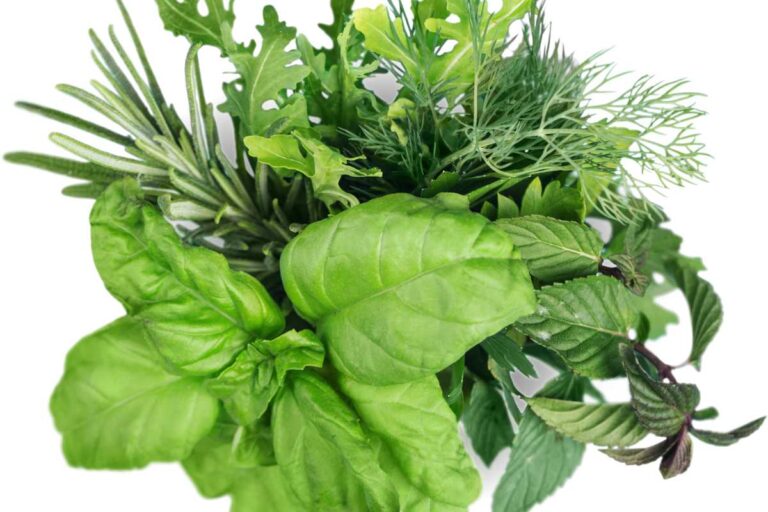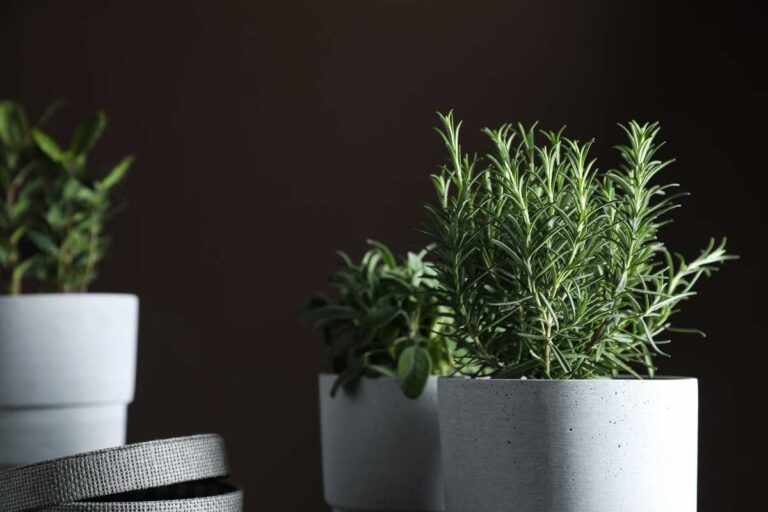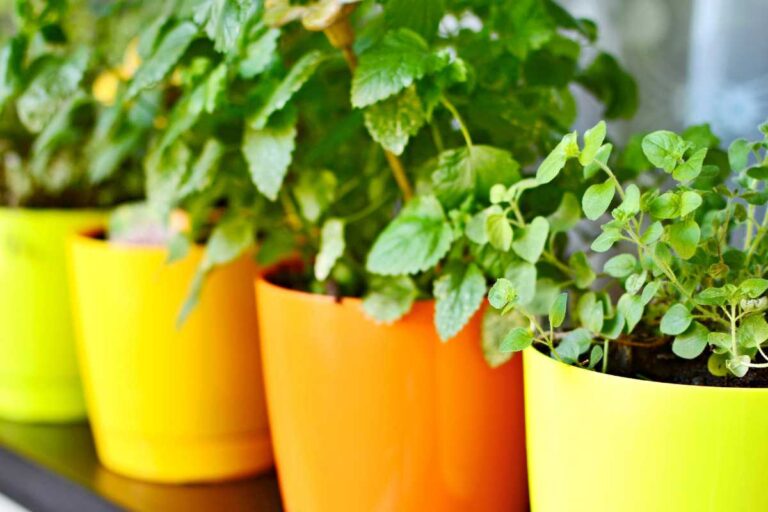What Is the Healthiest Herb to Grow? Cultivating Wellness with the Top 10 Healthy Herbs for a Healthier Lifestyle
What Is the Healthiest Herb to Grow? Cultivating Wellness with the Top 10 Healthy Herbs for a Healthier Lifestyle

Growing your own herbs not only adds a touch of green to your home but also offers a host of health benefits. In this research paper, we delve into the world of herbs and unveil the ultimate herb for optimal health.
By exploring the benefits of cultivating your own herbs, you’ll discover a sustainable and cost-effective way to enhance your well-being.
While there are numerous herbs to choose from, one stands out as the best in terms of packing a nutritional punch. This herb is not only easy to grow but also boasts an impressive array of health-promoting properties that can support various aspects of your well-being.
By understanding the advantages of growing your own herbs and identifying which one reigns supreme in terms of nutrition, you’ll be empowered to take control of your health journey.
So, let’s dive into the fascinating world of herb cultivation and uncover nature’s gift for optimal wellness.
| Herb | Potential Health Benefits |
|---|---|
| 1. Basil | Anti-inflammatory, antioxidant, antibacterial properties |
| 2. Mint | Digestive aid, relieves headaches, reduces stress |
| 3. Rosemary | Improves memory, boosts mood, reduces inflammation |
| 4. Thyme | Antioxidant, supports respiratory health, aids digestion |
| 5. Oregano | Antimicrobial, anti-inflammatory, rich in antioxidants |
| 6. Sage | Enhances brain function, supports oral health, reduces menopausal symptoms |
| 7. Parsley | Rich in vitamins and minerals, supports kidney health, freshens breath |
| 8. Cilantro | Detoxifying, aids digestion, reduces anxiety |
| 9. Dill | Anti-inflammatory, supports bone health, aids digestion |
| 10. Chives | Antioxidant, supports heart health, boosts immune system |
Tired of struggling with outdoor herb gardens in unpredictable weather? Discover the secret to successful herbal gardening indoors and enjoy fresh herbs year-round. Check out our article now!
Benefits of Growing Herbs at Home
Growing herbs at home offers a range of benefits that go beyond just adding flavor to your dishes. Not only can you enjoy the convenience of having fresh, pesticide-free herbs right at your fingertips, but you can also save money by avoiding store-bought herbs.
Growing herbs allows you to customize your herb garden to suit your specific needs and preferences.
Enjoy Fresh, Pesticide-Free Herbs Right at Your Fingertips
One of the significant advantages of growing herbs at home is the ability to have access to fresh and pesticide-free ingredients whenever you need them. When you grow your own herbs, you have full control over how they are cultivated and cared for.
You can choose organic methods, ensuring that no harmful chemicals or pesticides come into contact with the plants.
Having fresh herbs readily available in your backyard or kitchen windowsill allows you to enhance the flavors of your meals effortlessly. Whether it’s adding a handful of basil leaves to a pasta sauce or garnishing a salad with freshly picked cilantro, the vibrant taste and aroma will elevate your culinary creations.
Save Money by Avoiding Store-Bought Herbs
Another compelling reason to grow herbs at home is the potential cost savings compared to purchasing them from stores. Store-bought herbs can be quite expensive, especially if you frequently use them in your cooking or for home remedies.
By cultivating your own herb garden, you eliminate the need to constantly buy packaged herbs.
Imagine not having to spend extra dollars on that small packet of dried rosemary or thyme every time you run out! With an herb garden at home, all it takes is a quick trip outside or a few steps towards your kitchen window to harvest what you need.
This not only saves money but also reduces waste since there’s no need for excessive packaging.
Customize Your Herb Garden to Suit Your Specific Needs
You have the freedom to customize your garden according to your preferences and needs. Whether you have limited space or an expansive backyard, there are various options available for creating an herb garden that suits your home.
For those with limited space, vertical gardens or hanging baskets can be a great solution. These allow you to grow herbs even in small apartments or balconies. If you have more room to spare, consider building raised beds or dedicating a section of your garden solely for herbs.
Customizing your herb garden also means choosing the specific herbs that align with your culinary tastes or home remedies. From classic favorites like basil, parsley, and mint to more exotic varieties such as lemongrass or lavender, the choices are endless. You can experiment with different flavors and scents that cater to your unique preferences.
Top Medicinal Herbs to Grow
Growing your own healthy herbs not only adds beauty to your garden but also provides you with a natural way to support your well-being. Many herbs possess powerful medicinal properties that have been used for centuries in traditional medicine.
Chamomile: A Soothing Herb
Chamomile is a versatile medicinal herb known for its calming and soothing effects. It has been used for centuries as a natural remedy for various ailments.
One of the most well-known uses of chamomile is as a sleep aid. Drinking chamomile tea before bed can help promote relaxation and improve sleep quality.
In addition to its sedative properties, chamomile also possesses anti-inflammatory and antioxidant effects.
This makes it an excellent choice for relieving digestive issues such as indigestion, bloating, and stomach cramps. Chamomile tea can be consumed after meals to soothe the digestive system and alleviate discomfort.
Furthermore, chamomile has been found to have antimicrobial properties that can help fight against infections. Applying chamomile-infused creams or ointments topically may aid in wound healing and reduce skin inflammation.
Lavender: A Fragrant Remedy
Lavender is widely recognized for its pleasant fragrance, but it also offers numerous health benefits.
This aromatic herb has calming properties that make it an effective remedy for anxiety and stress relief. Inhaling lavender essential oil or using lavender-infused products can help promote relaxation and improve mood.
Moreover, lavender possesses analgesic properties that can provide relief from headaches and migraines when applied topically or inhaled through steam inhalation. Its anti-inflammatory effects may also assist in reducing pain associated with inflammatory conditions such as arthritis.
Lavender has been shown to have antibacterial properties that can help combat skin infections and promote wound healing. It can be used in the form of essential oil, creams, or lotions to alleviate skin irritations and speed up the recovery process.
Peppermint: A Refreshing Herb
Known for its refreshing aroma and cooling sensation, peppermint is a powerful medicinal herb with multiple health benefits.
Peppermint tea is often consumed to aid digestion and relieve gastrointestinal issues such as bloating, gas, and stomach cramps. The menthol compound found in peppermint helps relax the muscles of the gastrointestinal tract, easing discomfort.
Furthermore, peppermint has been found to have antimicrobial properties that can help fight against bacteria and fungi.
his makes it a valuable herb for maintaining oral health by reducing bad breath and preventing dental infections.
Peppermint oil also possesses analgesic properties that can provide relief from tension headaches when applied topically. Its cooling effect on the skin helps soothe muscle tension and reduce pain.
Growing and Using Herbs for Wellness
Growing and utilizing herbs can be a rewarding experience that not only adds flavor to your dishes but also provides numerous health benefits. Whether you have a spacious garden or just a small balcony, cultivating herbs is an accessible way to enhance your well-being.
Gain insights into cultivating and harvesting herbs effectively.
To ensure successful herb cultivation, it is essential to understand the best practices for growing and harvesting these plants. Here are some key insights:
- Choose healthy herb varieties: Selecting robust and disease-resistant herb varieties sets the foundation for successful growth.
- Provide optimal growing conditions: Most herbs thrive in well-drained soil with ample sunlight exposure. Be sure to water them adequately while avoiding overwatering.
- Prune regularly: Trimming your herb plants helps promote bushier growth and prevents them from becoming leggy or woody.
- Harvest at the right time: Each herb has its own ideal harvest time when its flavors and medicinal properties are at their peak. For instance, oregano should be harvested just before it flowers to capture its intense flavor.
Harness the therapeutic benefits of herbal remedies in everyday life.
Herbs possess remarkable healing properties that can be utilized in various ways to improve overall wellness. Consider incorporating these herbal remedies into your daily routine:
- Essential oils: Extracted from plants through distillation, essential oils offer concentrated therapeutic properties. Use them topically or aromatically by adding a few drops to carrier oils or diffusers.
- Teas: Brewing herbal teas allows you to enjoy both the flavors and health benefits of different herbs such as sage, chamomile, or peppermint.
- Tinctures: Tinctures involve extracting medicinal compounds from herbs using alcohol or vinegar. They are an effective way to preserve and concentrate the healing properties of plants.
- Homemade skincare products: Many herbs possess skin-soothing qualities that can be harnessed in homemade skincare products like balms, salves, and face masks.
Incorporate herbs into teas, tinctures, and homemade skincare products.
Once you have cultivated and harvested your herbs, there are numerous ways to incorporate them into various preparations. Here are some ideas:
- Teas: Steep fresh or dried herbs in hot water for a soothing herbal tea. Experiment with different combinations to create unique flavors and health benefits.
- Tinctures: Create your own tinctures by infusing herbs in alcohol or vinegar for several weeks. This process allows you to extract the medicinal properties of the herb for long-term use.
- Homemade Skincare Products: Blend dried herb powder with other ingredients such as oils, clays, or butters to make natural skincare products tailored to your needs.
Tips for Successful Herb Gardening
Growing your own herbs can be a rewarding and cost-effective way to enhance the flavors of your dishes. Whether you have a spacious garden or limited balcony space, with these tips, you can create a thriving herb garden that will provide you with fresh and healthy herbs all year round.
Choose a sunny location with well-drained soil for optimal growth.
Choosing the right location is crucial. Most herbs thrive in sunny areas, so look for a spot in your garden or balcony that receives at least six hours of direct sunlight daily. This will ensure that your plants receive enough light to grow and produce flavorful leaves.
It’s important to select an area with well-drained soil. Herbs generally prefer soil that is slightly acidic to neutral (pH level between 6 and 7). If your soil tends to be heavy or clay-like, consider adding organic matter such as compost or peat moss to improve drainage.
Water herbs regularly but avoid overwatering to prevent root rot.
Proper watering is essential for the health of your herb plants. While each herb has its specific water requirements, most prefer consistent moisture without being overly saturated. The key is finding the right balance between underwatering and overwatering.
To determine when it’s time to water your herbs, check the top inch of soil; if it feels dry to the touch, it’s time for watering.
However, be cautious not to let the soil become bone-dry between waterings as this may stress the plants. Consider using a drip irrigation system or a watering can with a narrow spout to target the base of each plant while avoiding wetting their foliage excessively.
Prune regularly to promote bushier growth and enhance flavor.
Regular pruning plays an essential role in maintaining healthy and productive herb plants. By removing dead leaves, flowers, and stems on a regular basis, you encourage the growth of new shoots and prevent your herbs from becoming leggy or woody.
When pruning, use clean gardening shears to make precise cuts just above a leaf node or branching point.
This technique stimulates lateral growth, resulting in bushier plants. By removing any flower buds that appear, you redirect the plant’s energy towards leaf production, intensifying the flavor of the leaves.
Easy-to-Grow Herbs for Beginners
Starting your own herb garden is a rewarding experience that allows you to enjoy the freshness and flavors of homegrown herbs in your everyday meals. If you’re new to gardening, it’s best to begin with low-maintenance options that are easy to grow.
Basil and Parsley: Low-Maintenance Options
Basil and parsley are excellent choices for novice gardeners due to their resilience and adaptability. These herbs thrive in various climates and require minimal care. Whether you have a spacious backyard or limited space on your balcony, basil and parsley can be grown successfully in pots or directly in the ground.
Basil is a versatile culinary herb that adds a delightful aroma to dishes. From classic Italian recipes like pasta sauces to refreshing pesto sauces, basil enhances the flavor profile of many cuisines. Its vibrant green leaves provide an appealing visual element when used as a garnish.
Parsley, known for its fresh taste and crisp texture, is another beginner-friendly herb. It complements a wide range of dishes such as salads, roasted vegetables, and soups. With regular watering and moderate sunlight exposure, parsley plants can flourish throughout the year.
Experimenting with Rosemary and Thyme
Once you’ve gained confidence in nurturing plants with simpler care requirements, it’s time to venture into more adventurous options like rosemary and thyme. These herbs not only add depth of flavor but also bring an aromatic touch to your kitchen garden.
Rosemary is an evergreen shrub that thrives in warm climates but can also survive colder temperatures with proper care. Its woody stems produce needle-like leaves that infuse roasted vegetables or grilled meats with an irresistible fragrance. You can even use rosemary sprigs as skewers while grilling for an added burst of flavor.
Thyme is a versatile herb that pairs well with various vegetables, meats, and even desserts. Its delicate leaves provide a subtle earthy taste to dishes like stews, marinades, and baked goods. Thyme plants require well-drained soil and moderate sunlight to flourish.
Enjoying the Rewards
By starting your herb garden with these easy-to-grow options, you can enjoy the satisfaction of growing your own herbs while enhancing the flavors of your favorite dishes.
As you gain experience and confidence in gardening, you can expand your collection to include other herbs such as cilantro, tarragon, garlic chives, dill, and mint.
Remember to sow seeds or transplant seedlings according to the instructions provided on the seed packets or plant labels.
Regularly water your herbs but avoid overwatering as it may lead to root rot. Consider pruning your plants regularly to encourage healthy growth and prevent them from becoming too bushy.
Boosting Immune System with Herbs
Support your immune system naturally with echinacea and elderberry. These powerful herbs are known for their immune-boosting properties and can help strengthen your body’s defense against illnesses.
Echinacea is rich in antioxidants that protect cells from damage caused by free radicals, while elderberry contains flavonoids that have been shown to stimulate the immune system.
Harness the antiviral properties of garlic to fend off illnesses. Garlic has long been used as a natural remedy for various health conditions, including its ability to fight off viruses.
It contains allicin, a compound known for its antimicrobial and antiviral properties. Incorporating garlic into your meals not only adds flavor but also provides a boost to your immune system.
Incorporate immune-strengthening herbs into daily meals or infusions. There are several herbs that can be easily incorporated into your daily routine to support a healthy immune system.
For example, ginger is not only a digestive aid but also possesses anti-inflammatory properties that can help alleviate symptoms of sore throat and promote overall well-being.
Turmeric is another herb with potent antioxidant properties that can aid in adrenal fatigue recovery and reduce inflammation in the body.
Consider adding herbs such as oregano and thyme to your dishes as they contain compounds that have been found to possess antimicrobial properties. These herbs not only enhance the flavor of your meals but also provide additional benefits for your immune system.
It’s important to pay attention to factors beyond just our diet. Stress plays a significant role in weakening our immune system, leading to increased susceptibility to illnesses. Adaptogenic herbs like ashwagandha and astragalus can help combat adrenal fatigue by supporting the body’s stress response and promoting overall well-being.
Furthermore, certain herbs have been found to have beneficial effects on other aspects of our health, such as cholesterol levels and blood sugar regulation. For instance, fenugreek has been shown to help lower cholesterol levels, while cinnamon can aid in stabilizing blood sugar levels.
Embracing the Power of Nature
We have also learned about how to grow and use herbs for wellness, along with some valuable tips for successful herb gardening. We discussed easy-to-grow herbs for beginners and how they can be used to boost the immune system.
By embracing the power of nature through growing your own herbs, you can take control of your health and well-being. Not only do these herbs provide numerous health benefits, but they also add freshness and flavor to your meals.
So why not start your own herb garden today? With a little bit of effort and care, you can enjoy the satisfaction of growing your own healthy ingredients right at home.
FAQs
How much sunlight do herbs need?
Herbs generally require around 6-8 hours of direct sunlight each day. However, some varieties such as mint or parsley can tolerate partial shade.
Can I grow herbs indoors?
Yes! Many herbs can be grown indoors as long as they receive sufficient sunlight or are placed under grow lights. Make sure to choose compact varieties suitable for indoor cultivation.
How often should I water my herb garden?
The watering frequency depends on various factors like weather conditions and soil type. In general, it is recommended to water herb plants when the top inch of soil feels dry.
Should I fertilize my herb garden?
Most herbs don’t require heavy fertilization if grown in nutrient-rich soil. However, a light application of organic fertilizer once or twice during the growing season can benefit their growth.
Can I harvest my herbs throughout the year?
Many herbs can be harvested throughout the year if you prune them correctly without damaging their overall growth pattern. However, it’s advisable to allow some time for the plants to recover between harvests.


